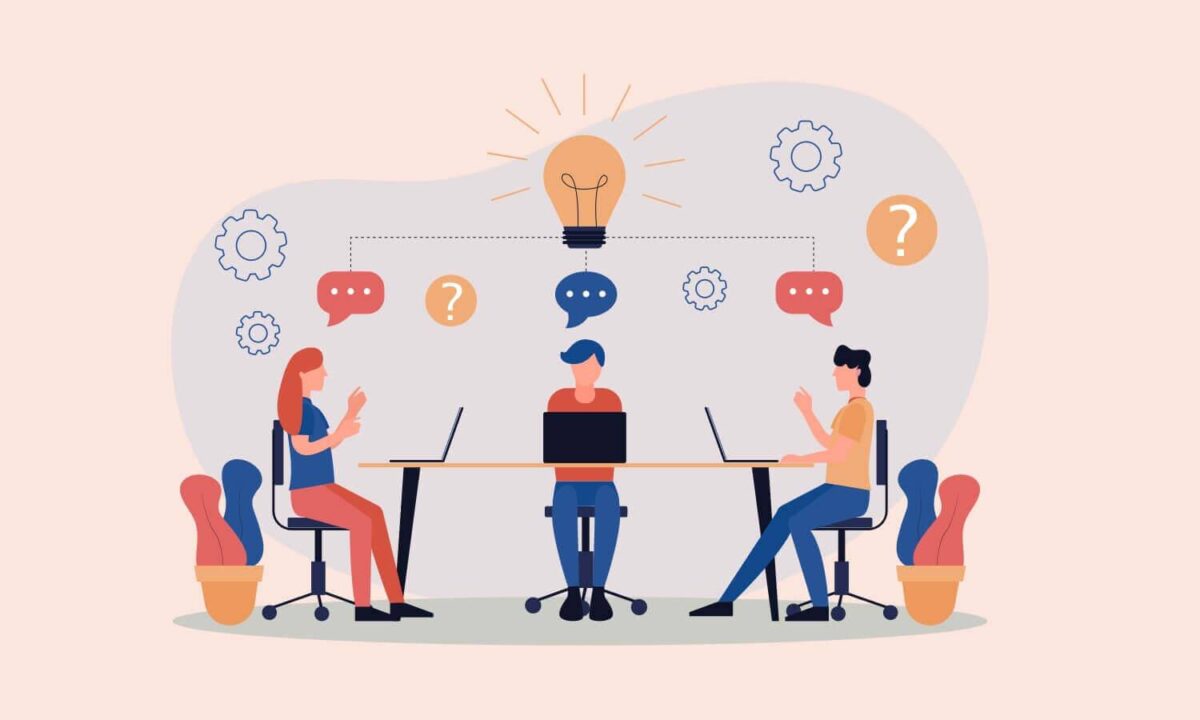Table of Contents
In modern business, building and maintaining strong customer relationships is paramount to success. The concept of a Business Model Canvas (BMC) has become a valuable tool for entrepreneurs and businesses alike to visualize and design their business strategies. The Business Model Canvas (BMC), introduced by Alexander Osterwalder and Yves Pigneur, has revolutionized the way we visualize, design, and iterate business models. Within this canvas, one of the key sections that demand special attention is the Customer Relationship segment. Let’s dive deeper into this critical aspect of business development.
The Essence of Customer Relationships Business Model Canvas
The Customer Relationship in the business model canvas is defined as a structured approach to understanding, managing, and enhancing these relationships. In the realm of business, your customers are your lifeline. How you interact with them, nurture your relationship, and cater to their unique needs can make or break your enterprise. Here’s a breakdown of this crucial section:
- Customer Segments
Your customer base isn’t homogeneous. It comprises various segments with distinct needs, preferences, and behaviors. Identifying and defining these segments is the first step in creating effective customer relationships. A one-size-fits-all approach rarely works.
- Customer Relationship Types
Not all customer relationships are the same. Some customers may require a high level of personal assistance, while others prefer self-service. Some may thrive in a community-based environment, while others prefer automation. Differentiate the types of relationships you need to establish to cater to the diverse needs of your customer segments.
- Customization
How do you tailor your products or services to match the preferences of different customer segments? Customization plays a vital role in creating strong bonds with your customers. It shows that you understand their unique needs and are willing to adapt to meet them.
- Channels
How and where do you interact with your customers? Whether it’s through physical channels like face-to-face meetings or digital channels like websites, social media, or email, selecting the right channels is crucial to connecting with your customers effectively.
- Touchpoints
Every interaction between your company and a customer is a touchpoint. This can be a sales call, onboarding process, support request, or feedback mechanism. Each touchpoint is an opportunity to strengthen or weaken the customer relationship. Knowing these touchpoints and optimizing them is vital.
- Customer Lifecycle
Map out the entire customer journey. From the moment they become aware of your product or service to their first purchase and beyond, understanding the customer lifecycle helps you tailor your approach at every stage, maximizing customer retention and satisfaction.
- Customer Feedback and Data
How do you collect and utilize customer feedback and data? These insights are priceless for improving your products, services, and overall customer experience. Actively seeking and acting on feedback can help you build trust and demonstrate your commitment to your customers.
- Customer Support
What degree of support is extended to customers? This can include access to customer service representatives, response times, and available support resources. Excellent customer support is often the linchpin of maintaining strong relationships.
- Retention and Loyalty Strategies
Retaining existing customers tends to be more cost-efficient than acquiring new ones. Your BMC should outline strategies to keep your customers coming back, such as loyalty programs, exclusive offers, and personalized communication.
- Complaint Handling
Inevitably, issues will arise. How you handle complaints and problems can have a profound impact on the customer relationship. Swift and effective resolution demonstrates that you value your customers’ concerns.
- Data Privacy and Security
In an age where data breaches and privacy concerns are prevalent, reassure your customers that their data is safe in your hands. Trust is a foundation of strong customer relationships, and this extends to data privacy and security.
Learn more: What is a Business Model Canvas?
Customer Segments in the Business Model Canvas
The Building Blocks of Business Model Canvas
Before diving into the importance of Customer Segments, let’s briefly revisit the Business Model Canvas. This visual framework consists of nine key building blocks that collectively outline your business model. These building blocks are:
- Customer Segments
- Value Propositions
- Channels
- Customer Relationships
- Revenue Streams
- Key Resources
- Key Activities
- Key Partnerships
- Cost Structure
Each of these building blocks plays a specific role in shaping your business strategy, but arguably, none are as pivotal as Customer Segments. Customer Segments, as the name suggests, represent the different groups of people or organizations that your business aims to serve. These are your customers.
Why Customer Segments Matter
- Tailored Value Proposition
One of the primary reasons Customer Segments are essential is that they directly influence your Value Proposition. Your Value Proposition is the unique value that your product or service provides to customers. By identifying and understanding the specific needs, desires, and pain points of each customer segment, you can tailor your Value Proposition to meet their expectations.
- Market Fit
Achieving product-market fit is a significant milestone for any startup. It means that your product or service satisfies the needs of a specific group of customers. Identifying your Customer Segments helps you narrow down your target audience and focus your resources on delivering what that segment truly wants.
- Effective Marketing and Sales
When you know your Customer Segments, you can fine-tune your marketing and sales efforts. You can craft targeted advertising campaigns and develop sales strategies that resonate with the characteristics and preferences of each segment.
- Resource Allocation
Different Customer Segments may require different resources, channels, and partnerships to reach them effectively. Understanding your segments helps you allocate your resources wisely, ensuring you get the most out of your budget.
- Competitive Advantage
In a competitive market, identifying underserved or niche Customer Segments can provide a strong competitive advantage. Your business can specialize in catering to these segments, offering them value that your competitors may overlook.
Identifying and Defining Customer Segments
To successfully leverage Customer Segments in your business model, follow these steps:
- Market Research: Conduct thorough market research to identify the various groups of potential customers. Analyze demographics, psychographics, and behavioral data to create distinct profiles for each segment.
- Customer Personas: Create comprehensive customer personas for every segment. A persona is a fictional representation of your ideal customer within a particular segment. It includes their characteristics, preferences, and pain points.
- Segment Prioritization: Not all segments are equally valuable. Prioritize your segments based on factors like size, growth potential, and fit with your offerings.
- Tailored Value Proposition: Craft a unique Value Proposition for each segment. Your messaging, features, and benefits should align with the specific needs of each group.
- Iterate and Refine: The process of defining Customer Segments is not static. It should be an ongoing exercise. As your business evolves and grows, so too may your customer segments.
Learn more: Lean Canvas vs. Business Model Canvas
Examples of Customer Segments Business Model Canvas
Customer Segments can vary widely across industries. Here are a few examples:
- B2B Software Company: Customer Segments might include small businesses, mid-sized enterprises, and large corporations. Each segment has distinct software needs and budgets.
- E-commerce Store: Segments could consist of individual consumers, resellers, and corporate buyers. The shopping behavior and expectations of these groups differ significantly.
- Healthcare Clinic: Customer Segments could be defined as pediatric patients, adult patients, and senior patients. Each group requires specialized medical care and services.
Conclusion
The Customer Relationship Business Model Canvas is a powerful tool that forces you to scrutinize every facet of your customer interactions. By doing so, you can align your strategies with the expectations of your customers, leading to increased customer satisfaction and loyalty. Customer Segments are the bedrock upon which your entire business model rests. Identifying, understanding, and catering to your various Customer Segments is vital for success in today’s competitive market. It enables you to provide the right products or services to the right people, allocate your resources efficiently, and create a strong competitive advantage.
Most Recent Posts
Explore the latest innovation insights and trends with our recent blog posts.













